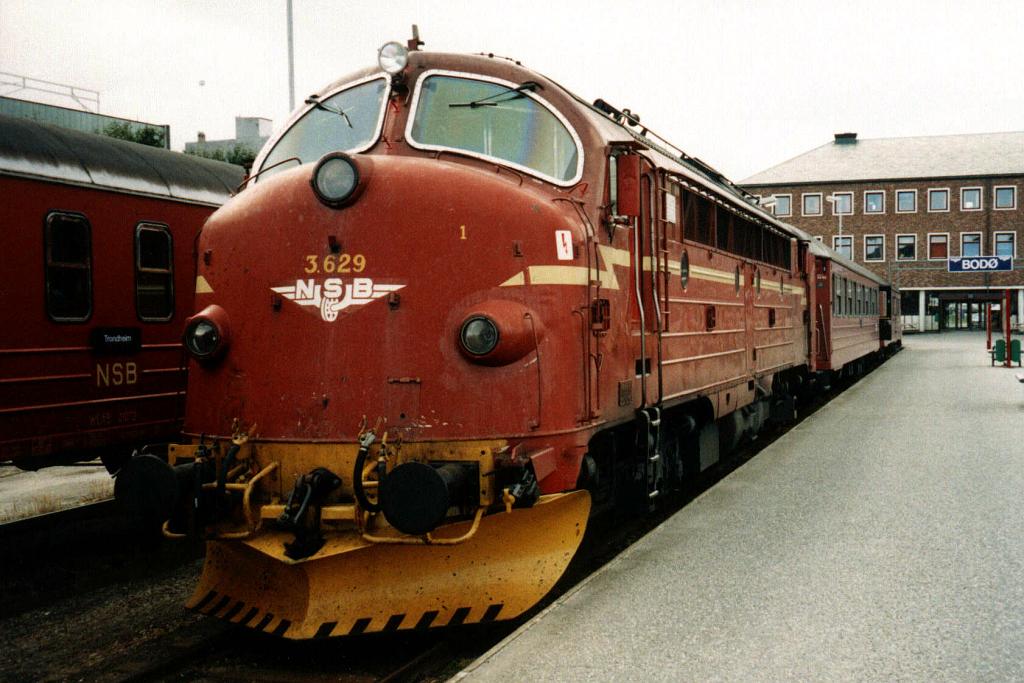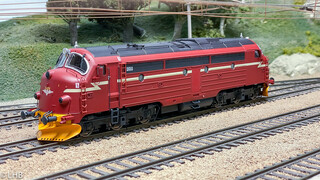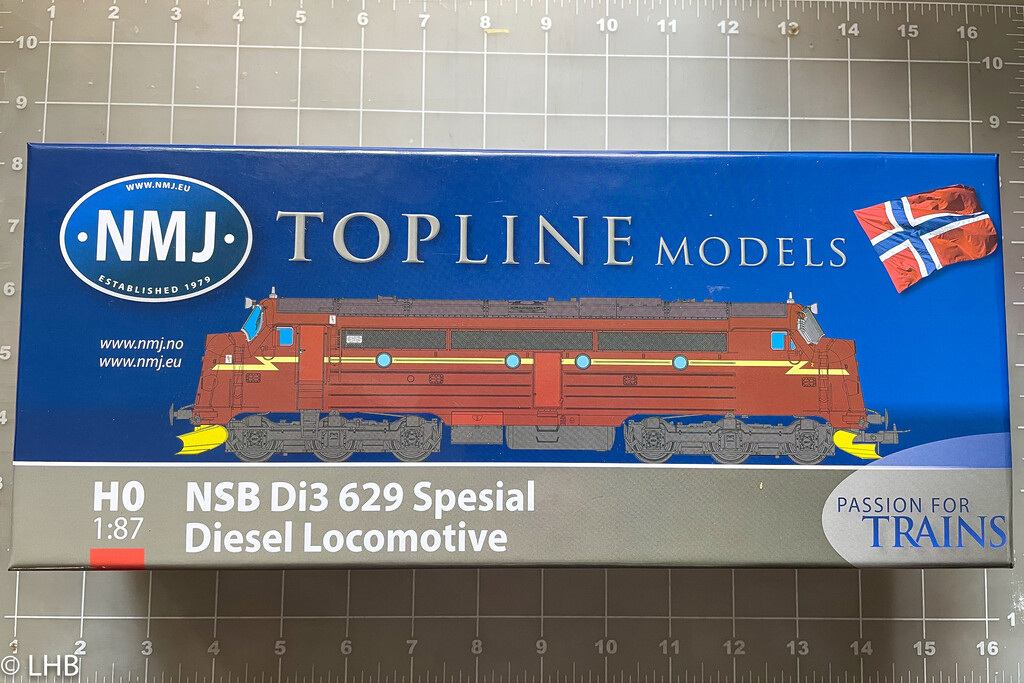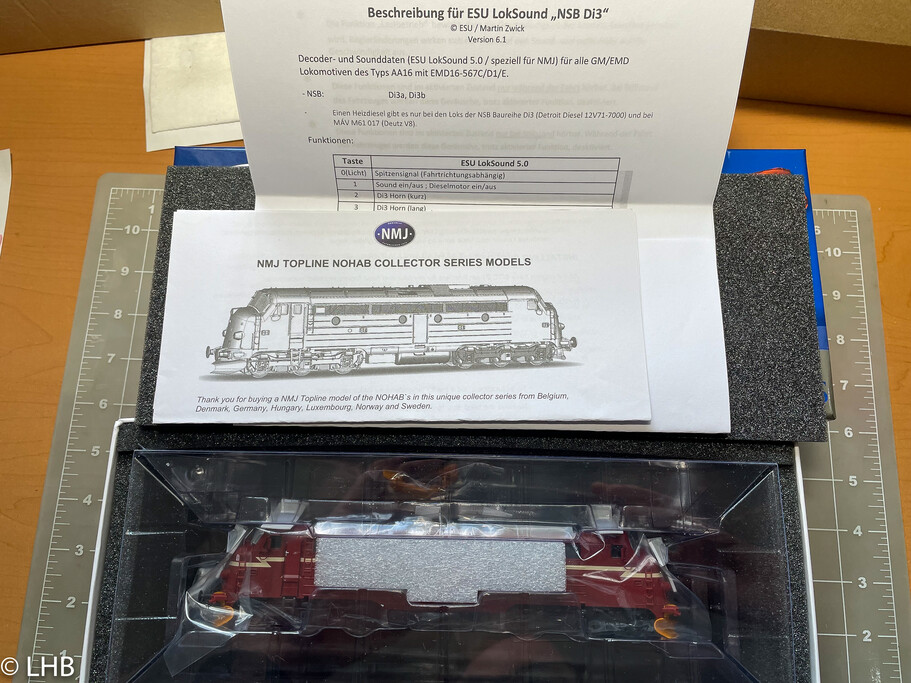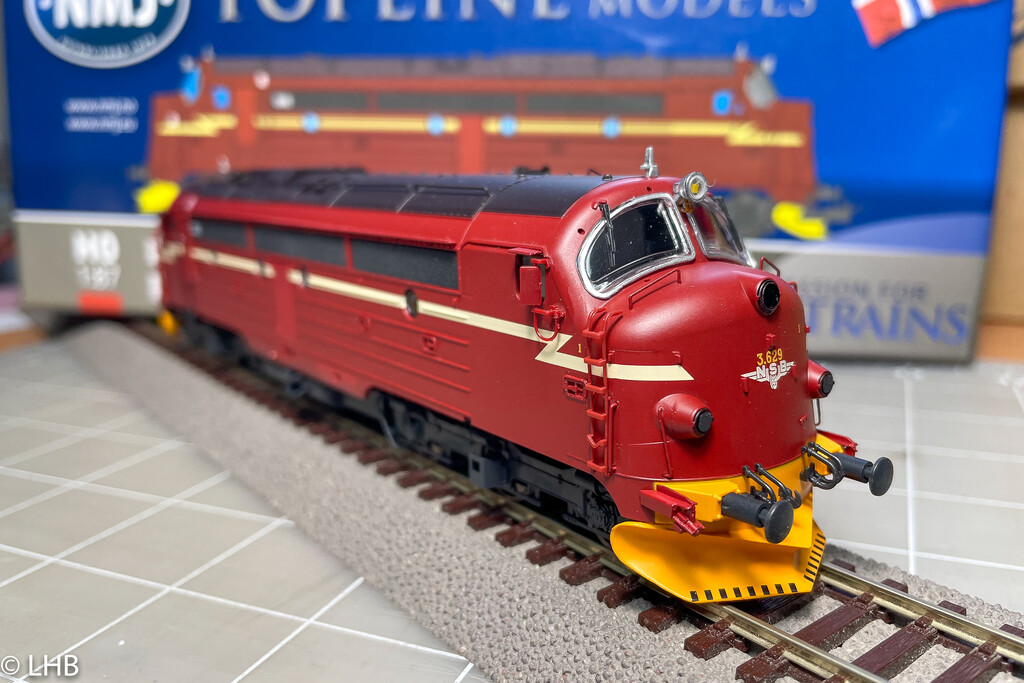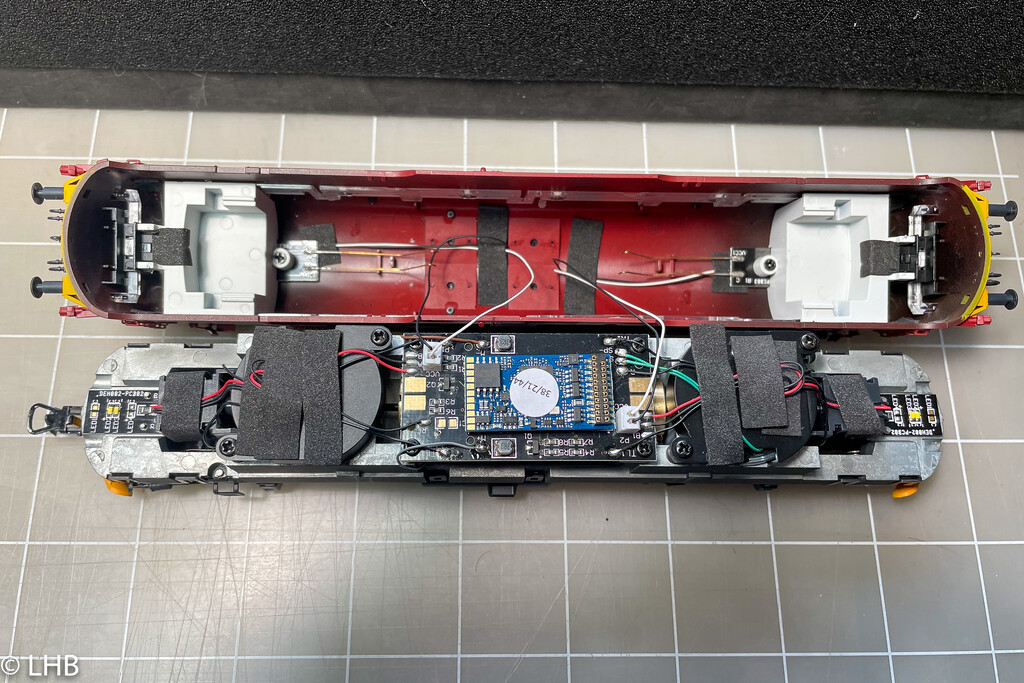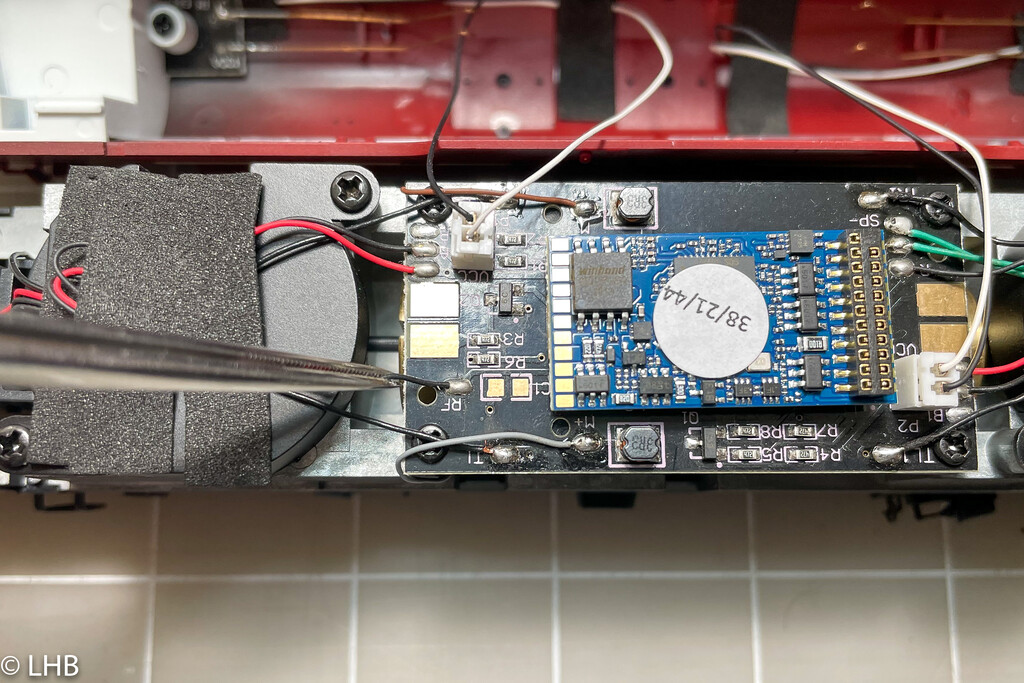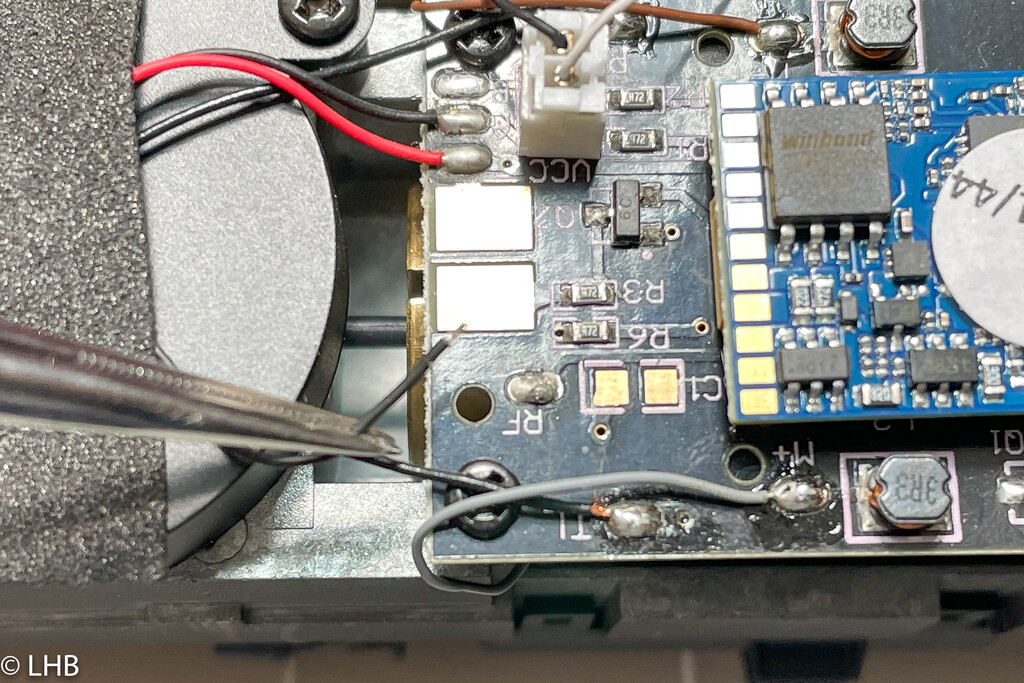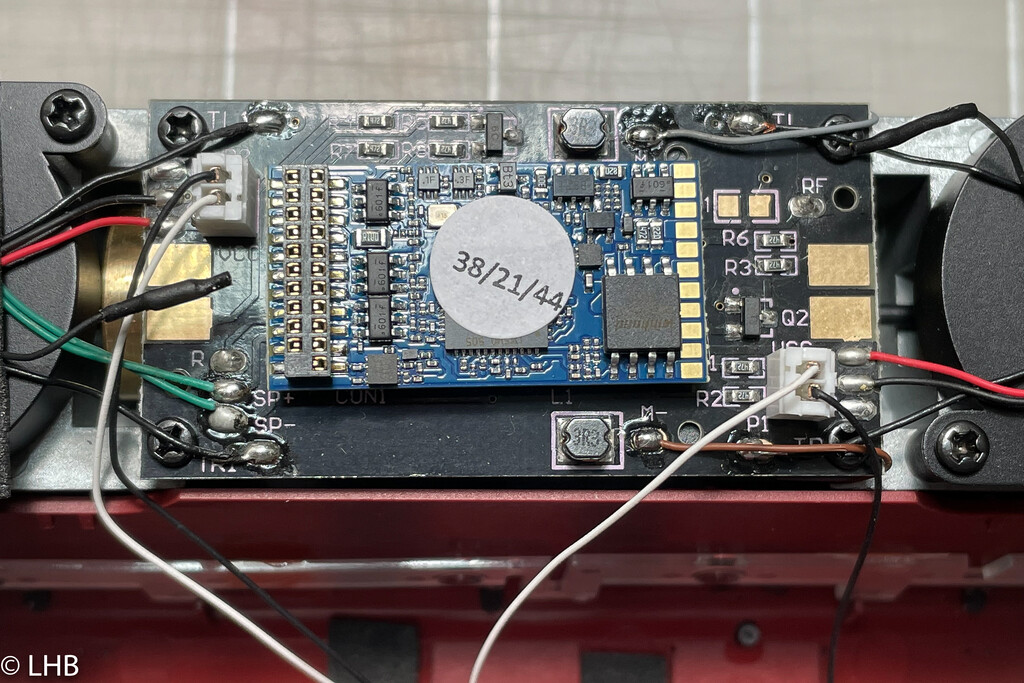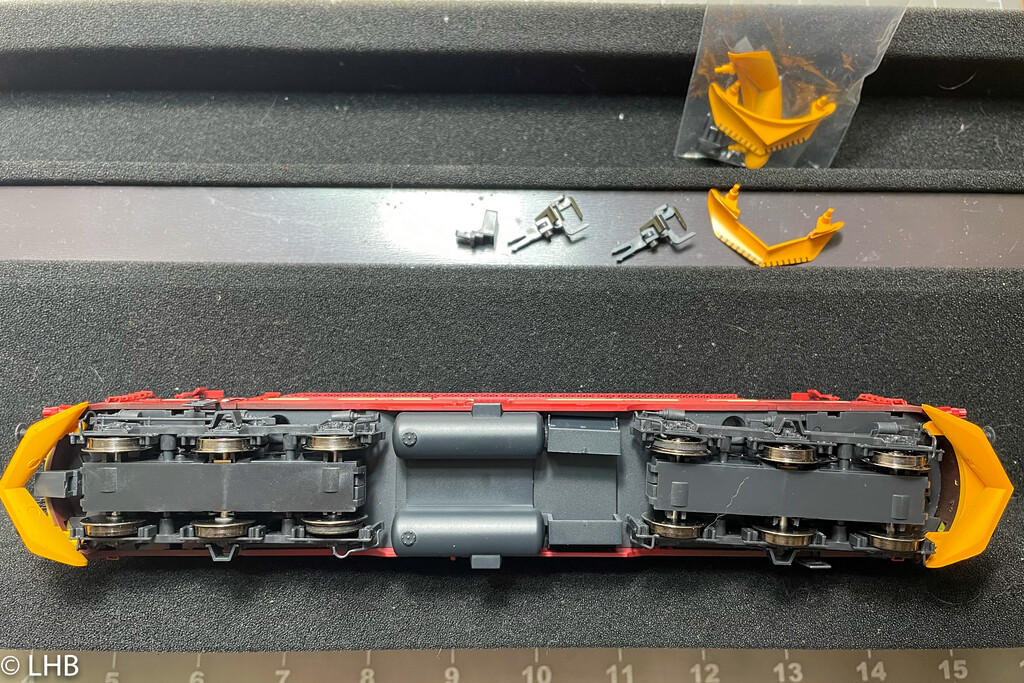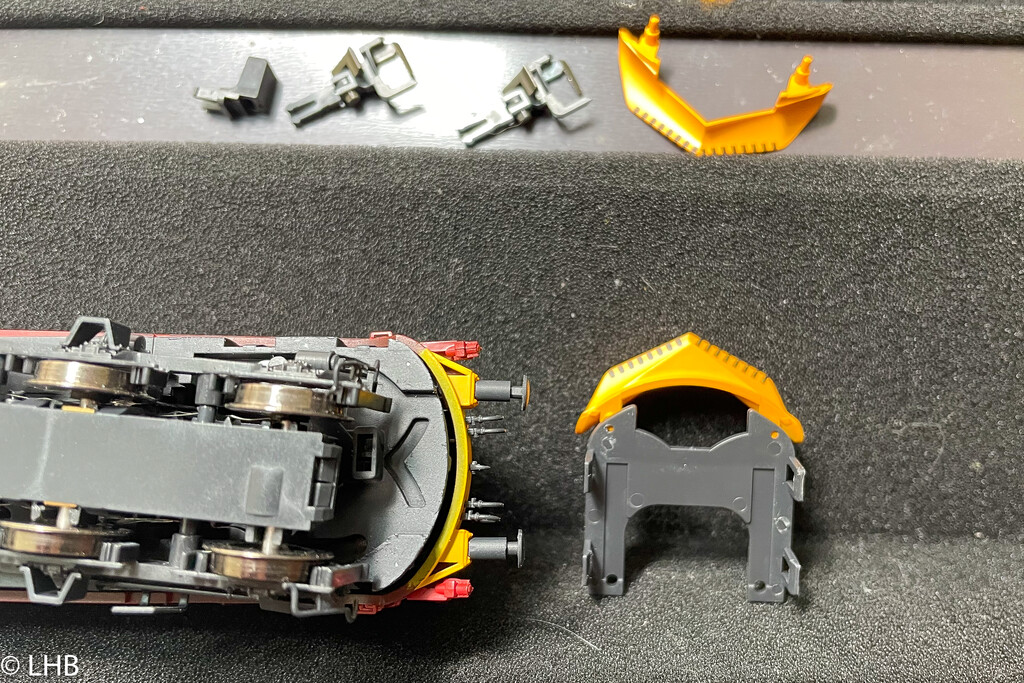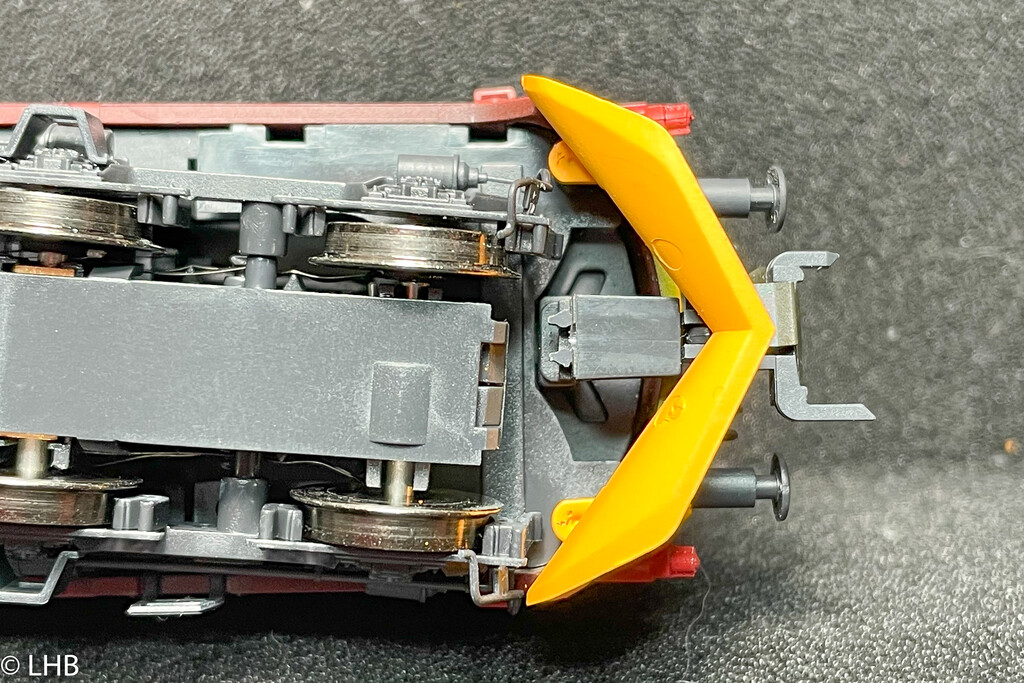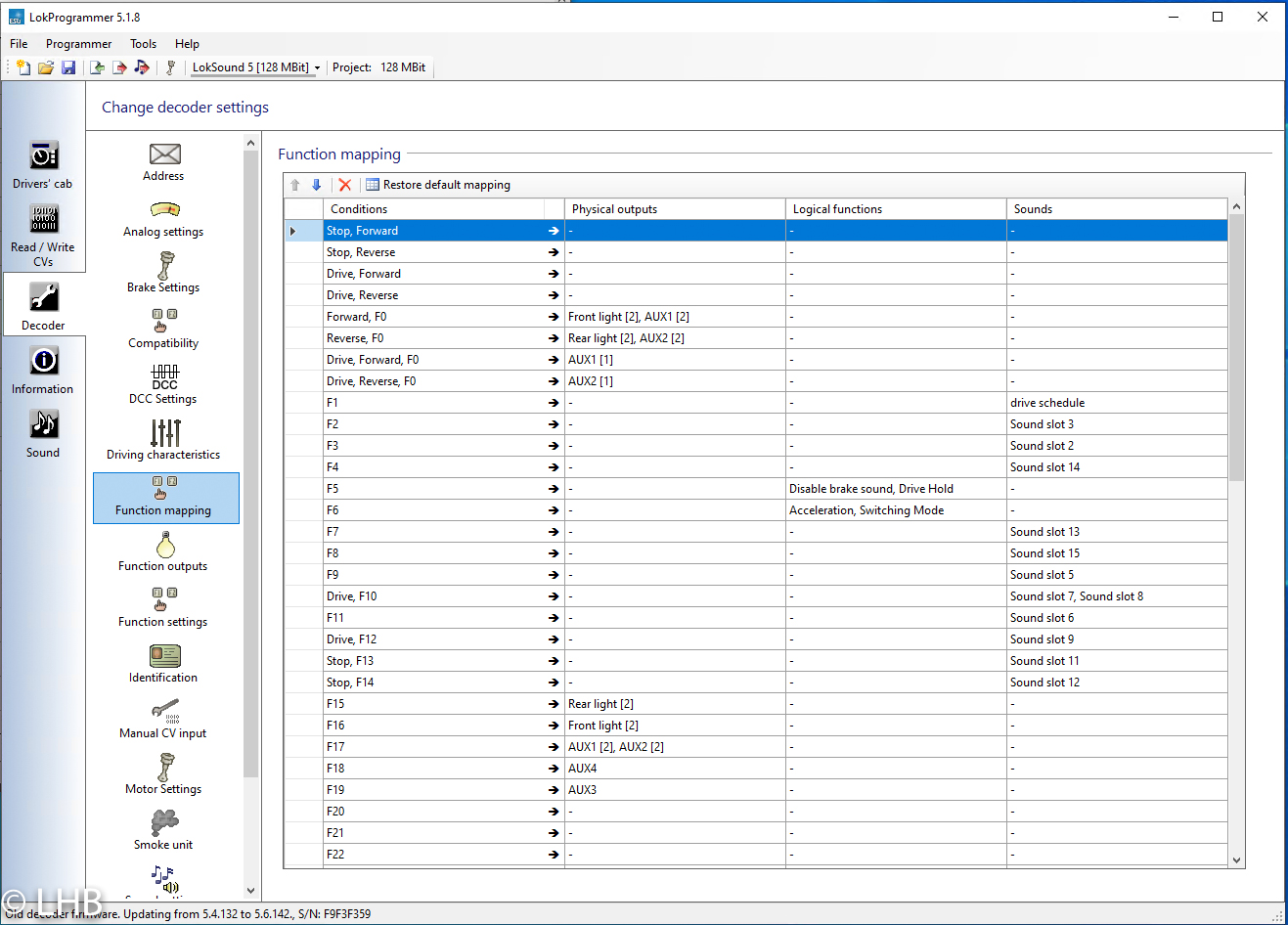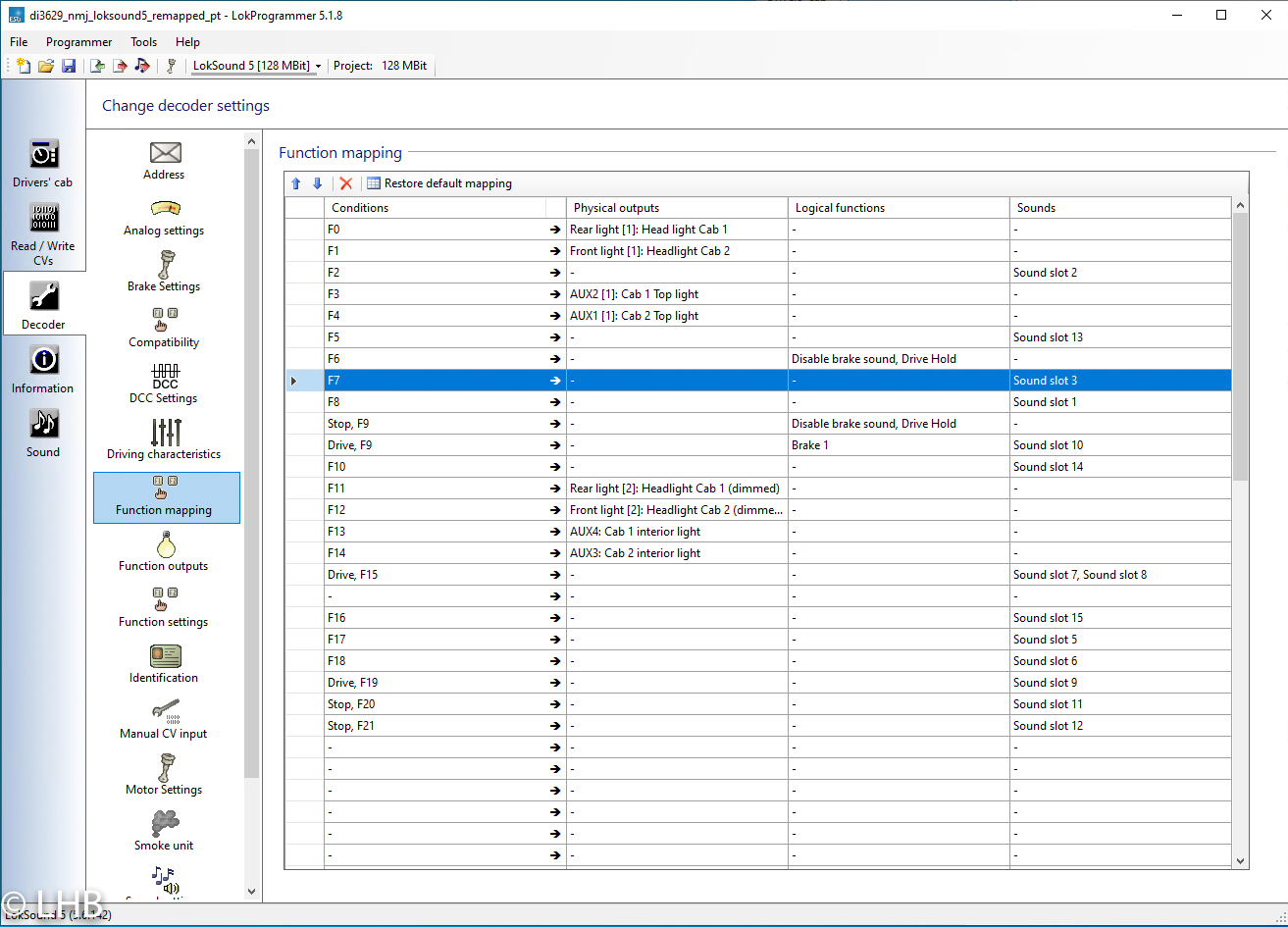Some info about the Di3.629
Unpacking
The box of the 629 is bigger than the what was used two years ago.
The model after unpacking. Very detailed. As described in the introduction, this model represents a unique color scheme that is a combination of the old brown color (gammel design) and the new red color (ny design). This model also is the first NMJ Topline model that represents the first iteration of the metal frame around the panzer glass. This was used by the Norwegian Railways during the first cab 1 isolation projects. Later on this changed to a different frame. See Di3.642 & Di3.643 models for examples.
Led/light adjustments.
Snow plow and coupler install
Sound decoder / function mapping
The picture to the right shows the remapped function mapping.
